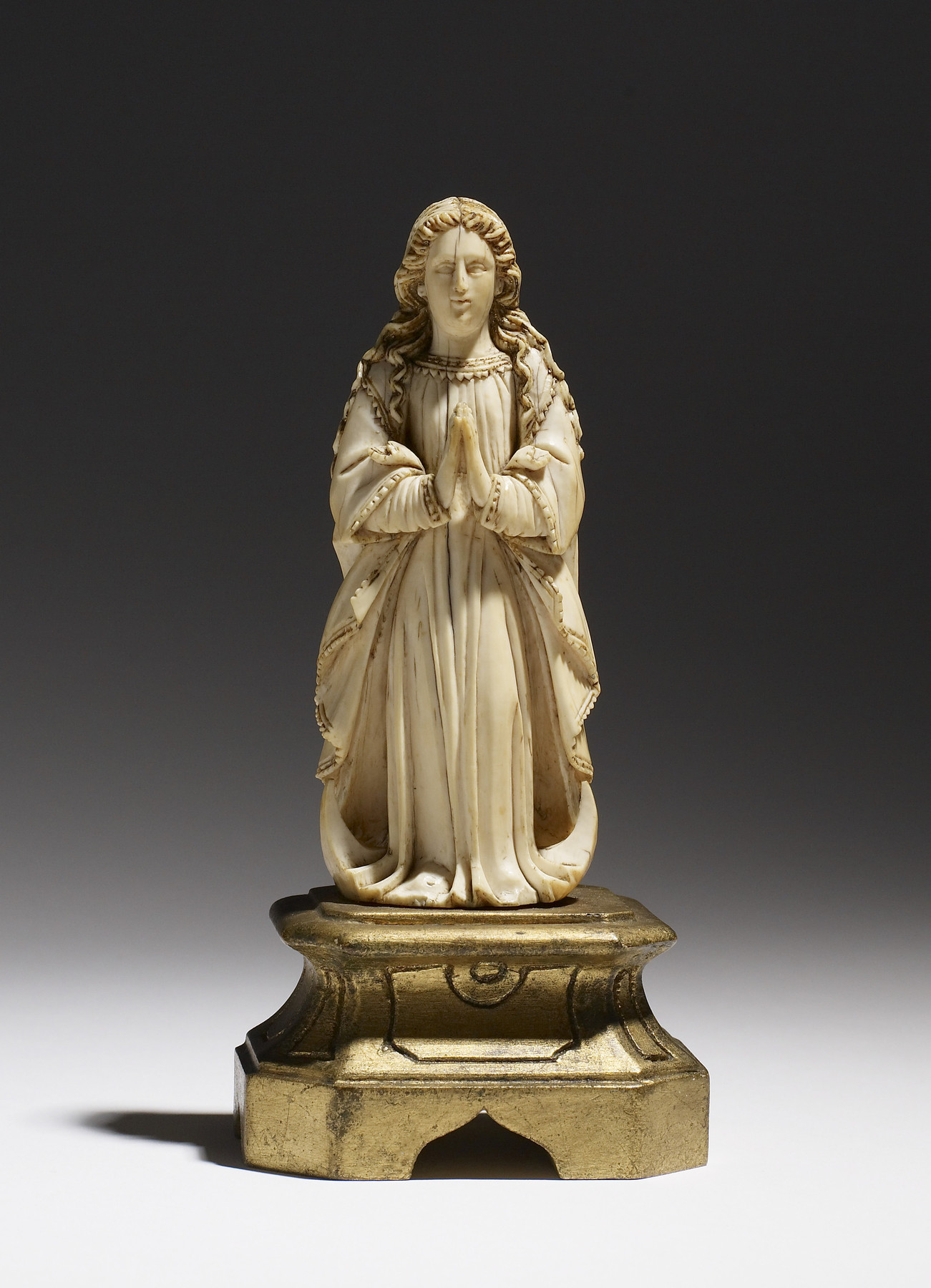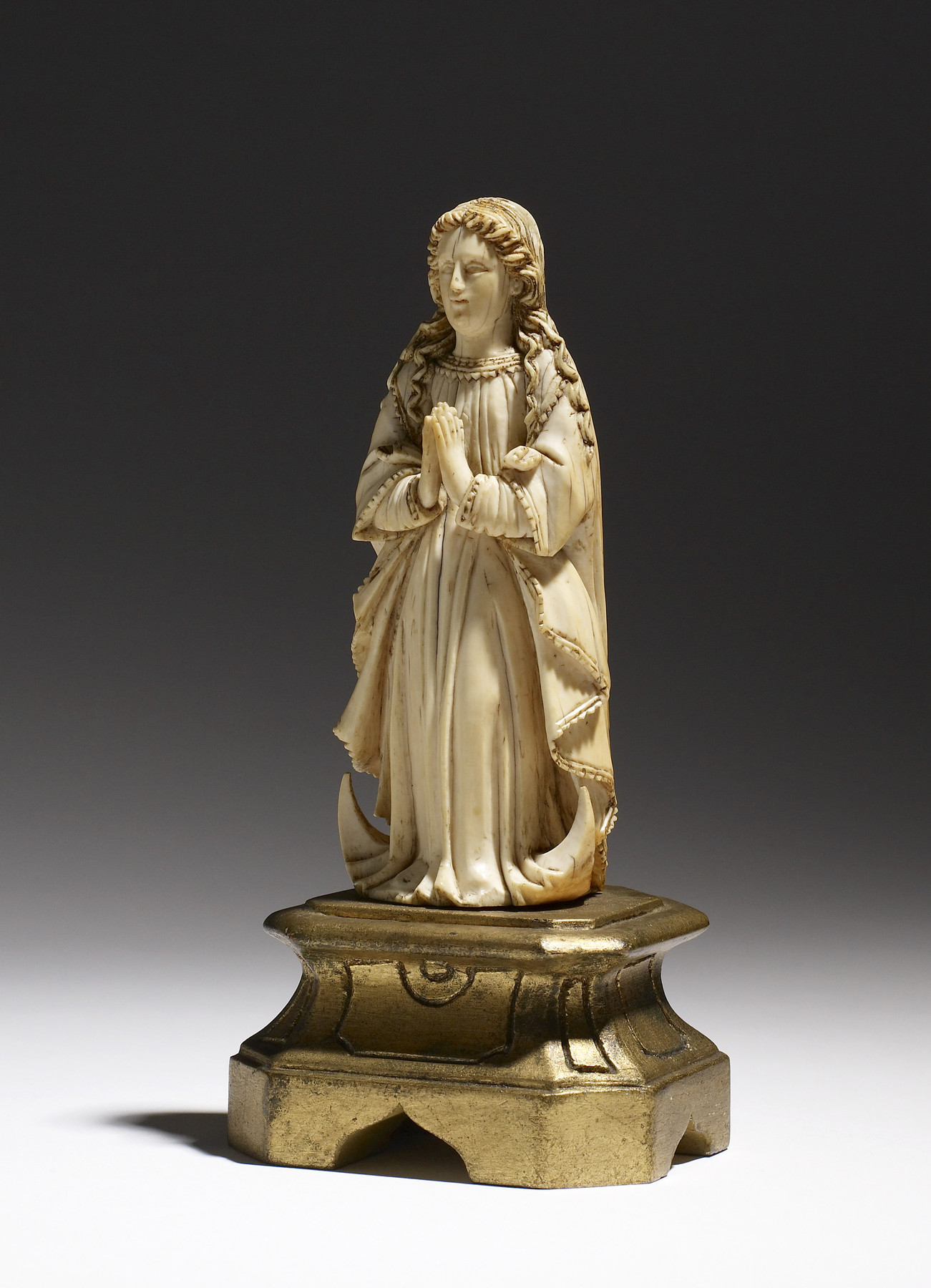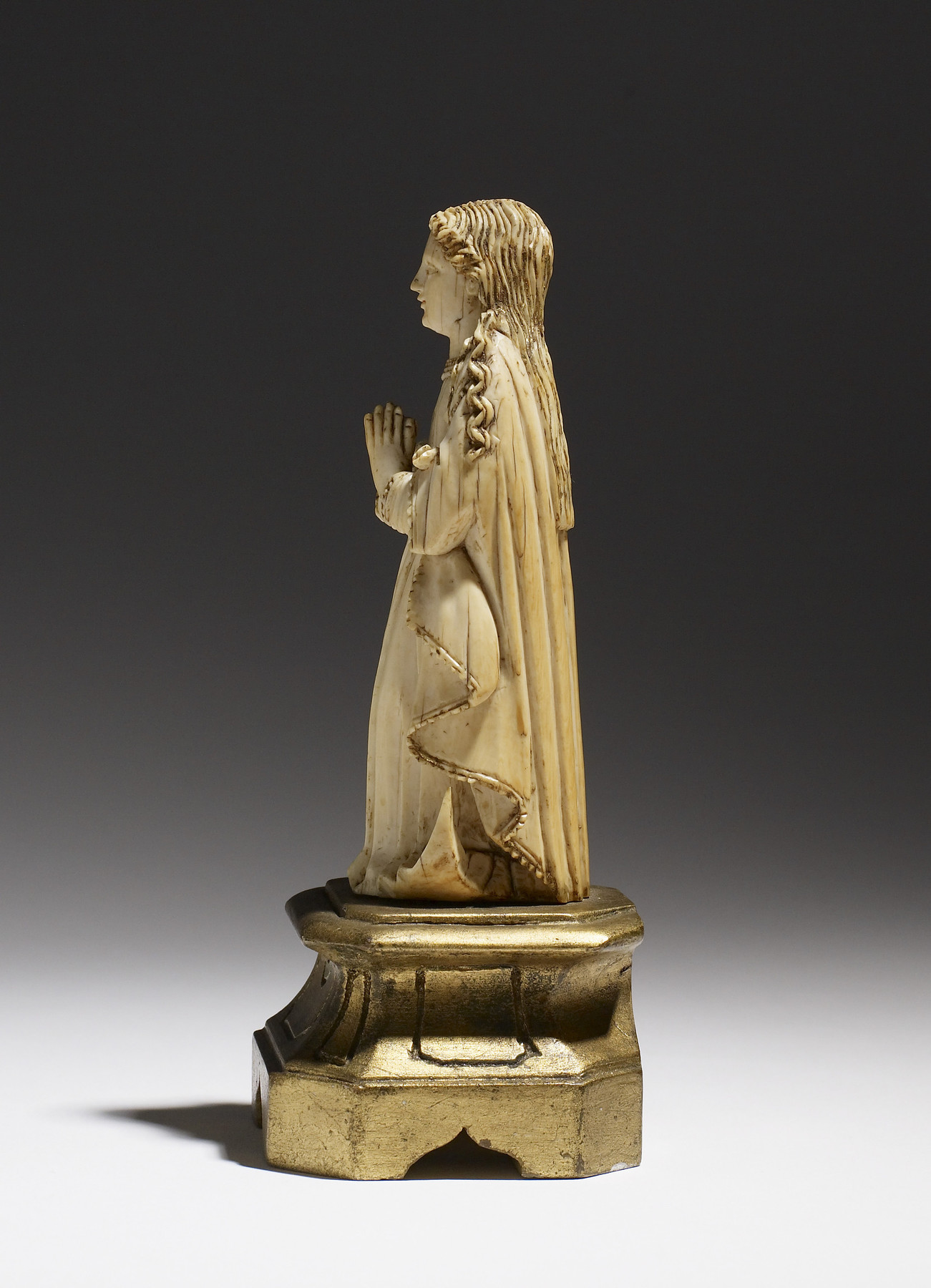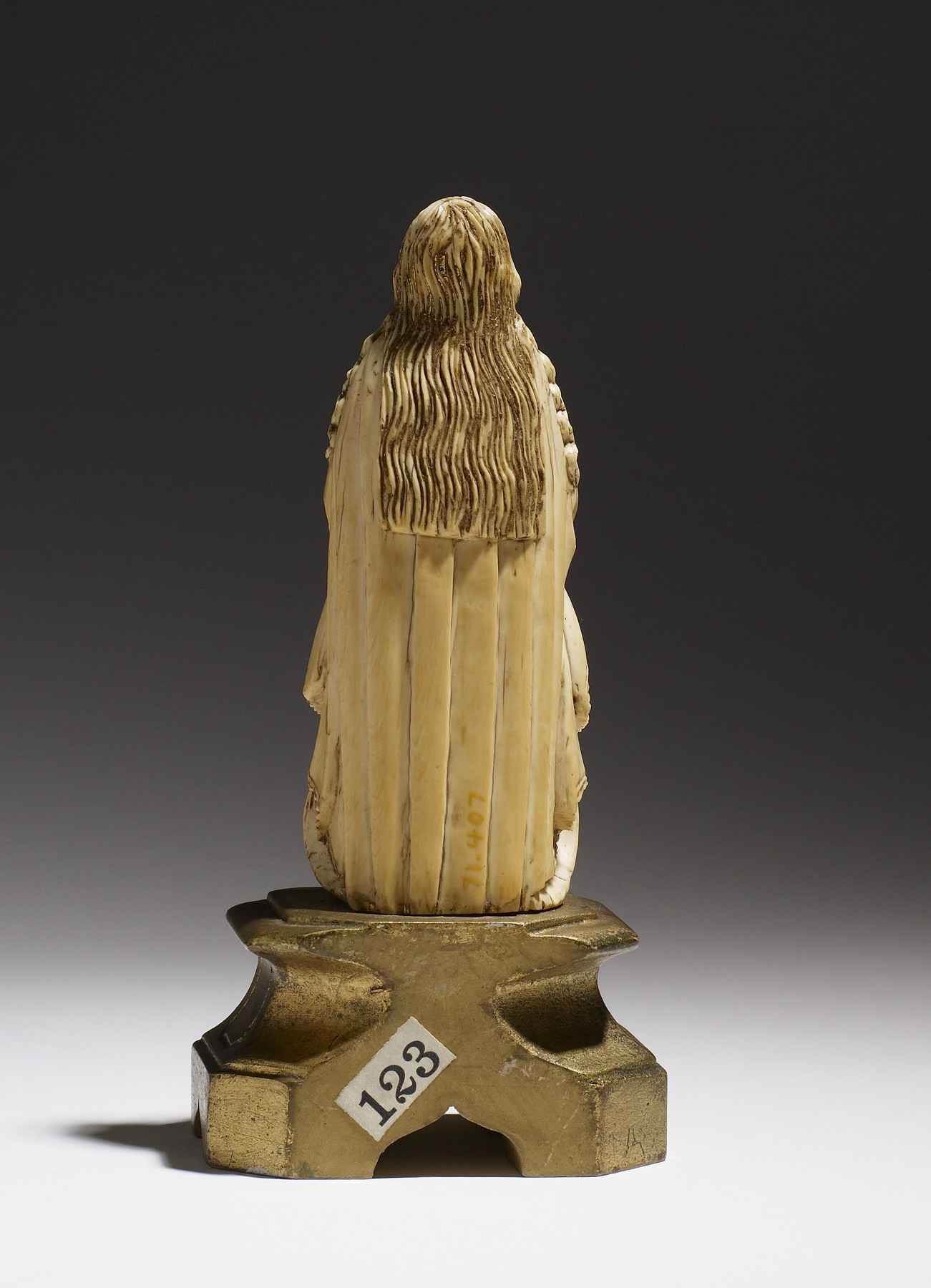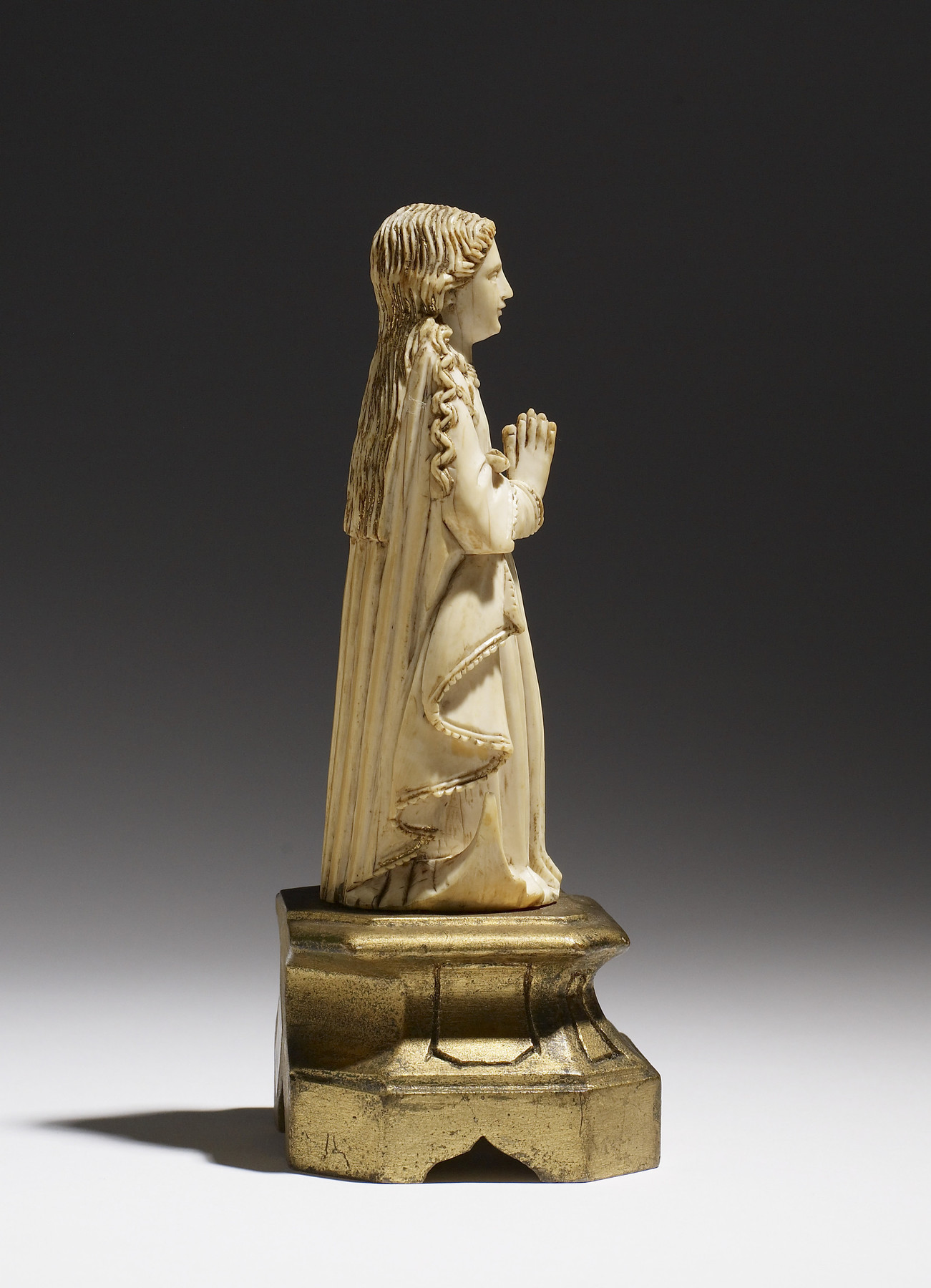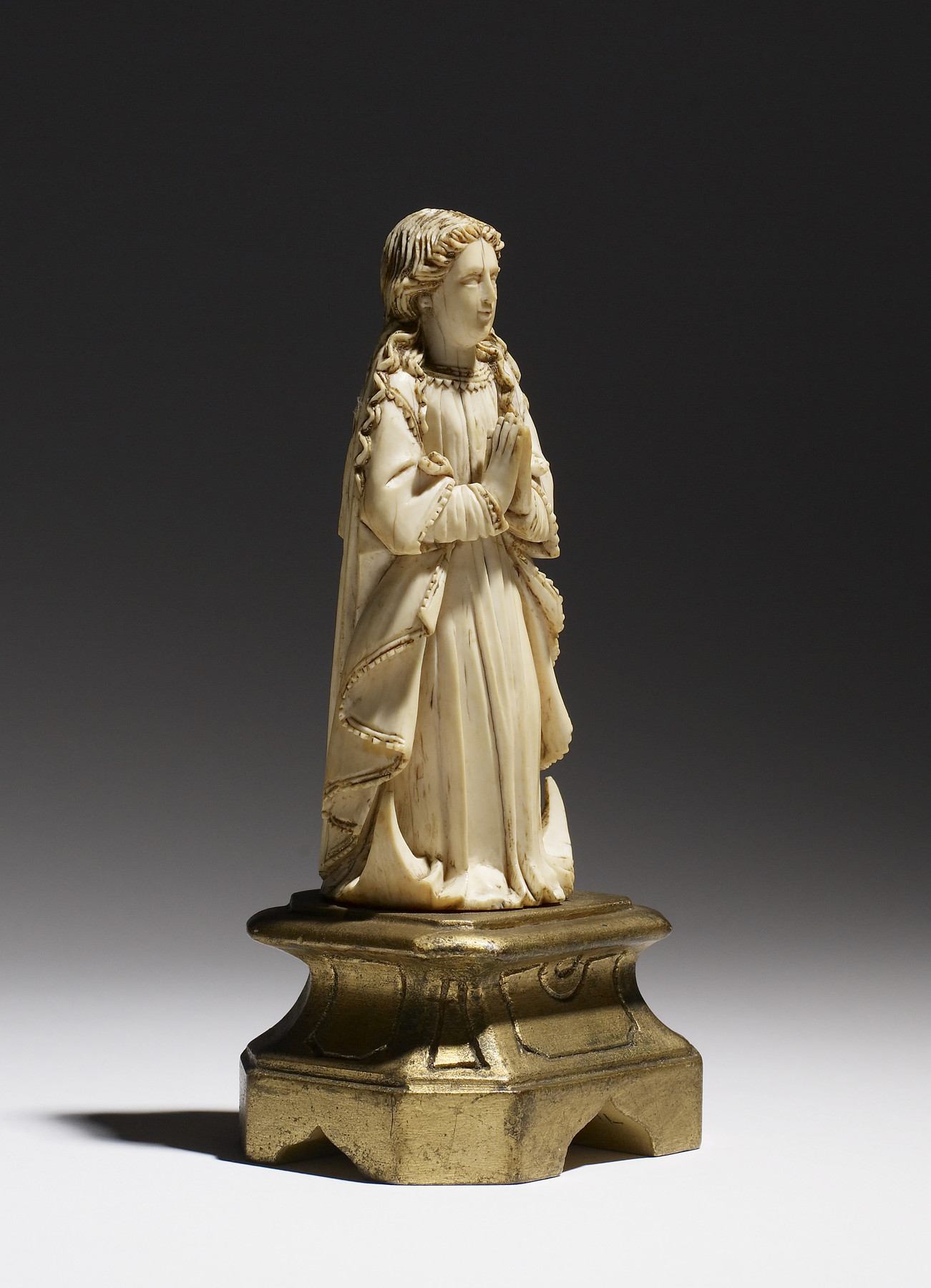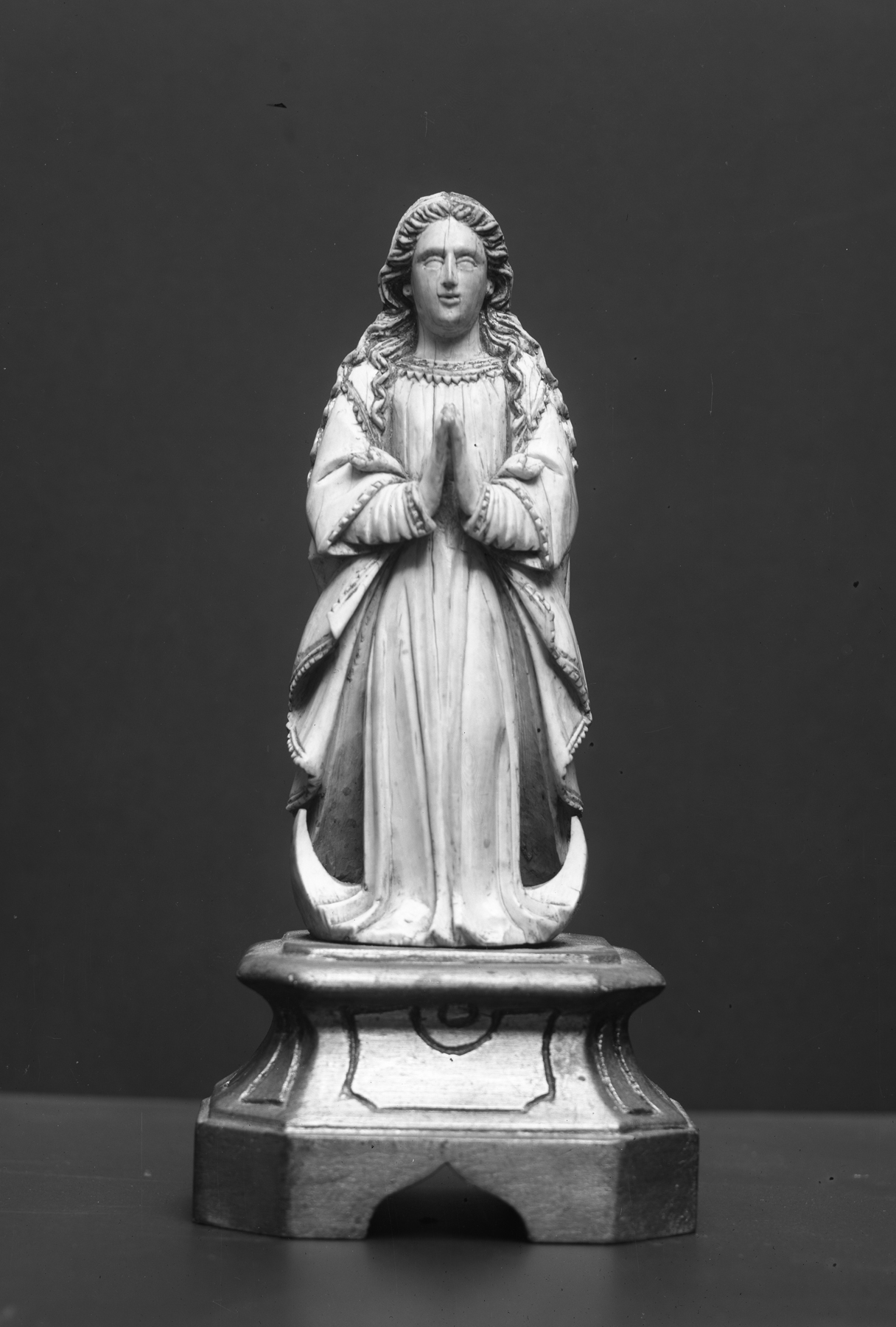The Virgin of the Immaculate Conception
(Baroque Europe )
The Virgin kneels on a crescent moon with her hands in an attitude of prayer. Her head is uncovered, and her hair falls down her back and in tresses over her shoulders. In rendering the folds of the garments, little concession has been made to anatomy.
This piece, like 71.342, was apparently carved in the Portuguese colony of Goa, on the west coast of the Indian subcontinent by a native artist.
Devotional statuettes carved in ivory celebrating the immaculate purity of the Virgin were popular in the 1600s in Europe and this taste spread to the colonies established by Catholic countries in Asia and the Americas. The three most important locations for production of these ivories were the portuguese colonies on the Indian subcontinent (Goa, where the present piece as well as Walters 71.407 were made), the island of Sri Lanka (see Walters 71.341) and the Spanish colony of the Philippines (see for example Walters 71.322).
A square paper label with blue borders on the under surface of the statuette is inscribed in ink: "123."
Provenance
Provenance (from the French provenir, 'to come from/forth') is the chronology of the ownership, custody, or location of a historical object.
William T. / Henry Walters Collection, Baltimore [date of acquisition unknown], by purchase; Walters Art Museum, 1931, by bequest.
Geographies
India, Goa (Place of Origin)
Measurements
H: 5 3/16 in. (13.2 cm)
Credit Line
Acquired by William T. or Henry Walters
Location in Museum
Not on view
Accession Number
In libraries, galleries, museums, and archives, an accession number is a unique identifier assigned to each object in the collection.
In libraries, galleries, museums, and archives, an accession number is a unique identifier assigned to each object in the collection.
71.407

